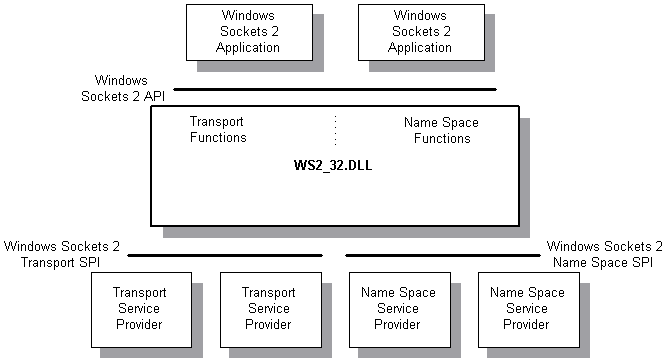
In order to provide simultaneous access to multiple transport protocols, the architecture has changed for Windows Sockets 2. With Windows Sockets 1.1, the DLL that implements the Windows Sockets interface is supplied by the vendor of the TCP/IP protocol stack. The interface between the Windows Sockets DLL and the underlying stack was both unique and proprietary. Windows Sockets 2 changes the model by defining a standard service provider interface (SPI) between the Windows Sockets DLL and protocol stacks. In this way, multiple stacks from different vendors can be accessed simultaneously from a single Windows Sockets DLL. Furthermore, Windows Sockets 2 support is not limited to TCP/IP protocol stacks as it is in Windows Sockets 1.1.
The Windows Open System Architecture (WOSA) compliant Windows Sockets 2 architecture is illustrated as follows:

Windows Sockets 2 Architecture
With the Windows Sockets 2 architecture, it is not necessary, or desirable, for stack vendors to supply their own implementation of WS2_32.DLL, since a single WS2_32.DLL must work across all stacks. The WS2_32.DLL and compatibility shims should be viewed in the same way as an operating system component.